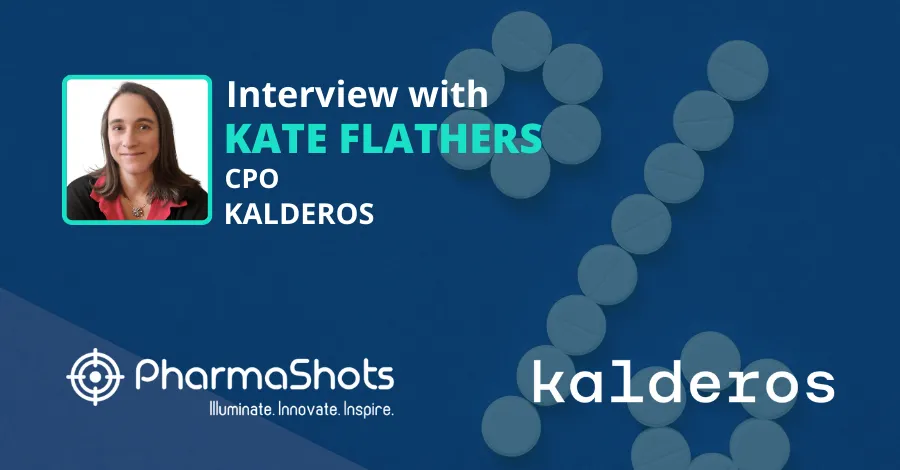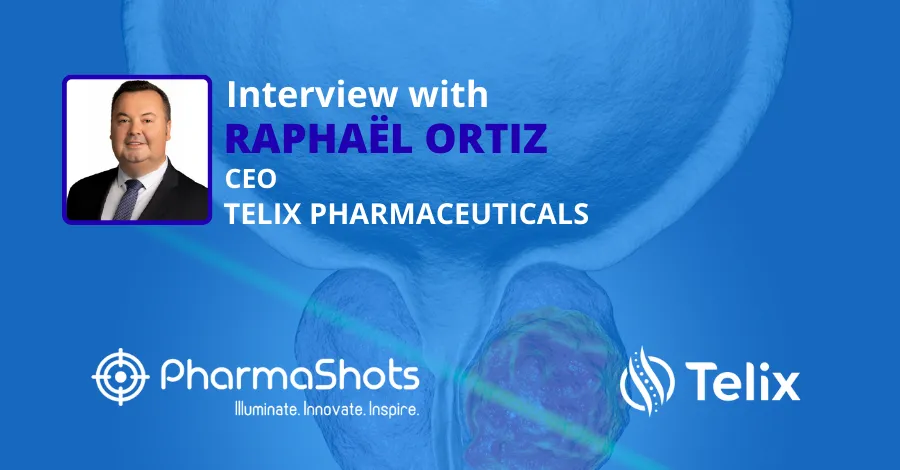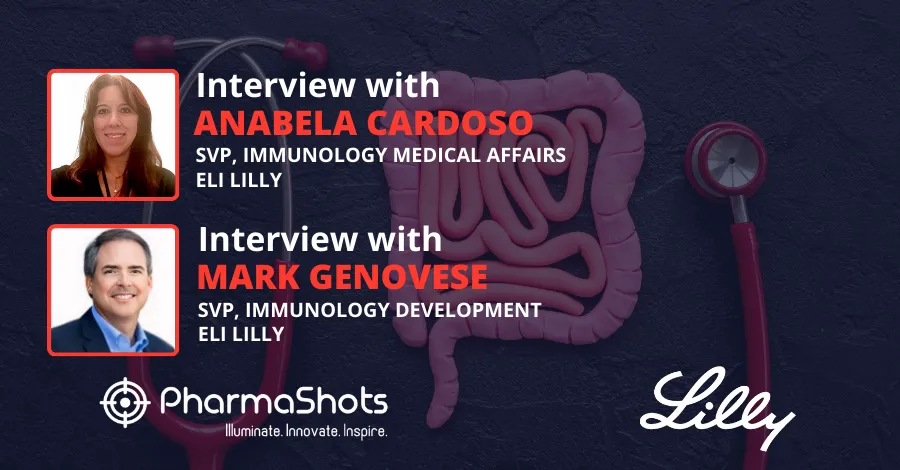
PharmaShots Interview: Dr. Trevor Feinstein and BeyondSpring's Dr. Lan Huang Shares Insight on the Data of Plinabulin + Docetaxel for NSCLC with EGFR Wild Type
In an interview with PharmaShots, Dr. Trevor Feinstein (Hematology Specialist in Fayetteville, GA) and Dr. Lan Huang (Co-founder, Chairman, and CEO at BeyondSpring) shared their views on the data of Plinabulin + Docetaxel in P-III DUBLIN-3 trial for NSCLC with EGFR Wild Type
Shots:
- The P-III DUBLIN-3 trial evaluates plinabulin + docetaxel vs docetaxel alone in 599 patients with 2L & 3L NSCLC EGFR wild type, with measurable lung lesion
- The trial met its 1EPs & 2EPs i.e improvement in OS, ORR, PFS, and OS rate @24 & 36mos. (22.1% vs 12.5% & 11.7% vs 5.3%); @48mos. OS (10.6% vs 0%), reduction in incidence of Grade 4 neutropenia (5.3% vs 27.8%)
- The company plans to seek US FDA and NMPA approval for plinabulin + docetaxel in NSCLC based on the clinical benefit and safety profile. Additionally, the NDA submission for NSCLC indication is expected in H1'22
Tuba: Highlight the key features of positive top-line data of Dublin-3 registrational trial of plinabulin in combination with docetaxel to treat 2L and 3L treatment of NSCLC with EGFR wild type?
Dr. Trevor Feinstein: The key features of the positive topline data for plinabulin, a first-in-class selective immunomodulating microtubule-binding agent (SIMBA), in combination with docetaxel to treat 2nd and 3rd line EGFR wild type NSCLC included meeting the primary endpoint of significantly increasing overall survival (OS) for these cancer patients. In addition, overall survival was doubled for patients 24- and 36-months after treatment. The clinical trial also met key secondary endpoints including significantly reducing the incidence of Grade 4 neutropenia, which is a low count of neutrophils--a type of white blood cell, as well as improving overall response rate (p<0.03) and progression-free survival(p<0.01).
Tuba: How will this drug transform the treatment for patients with NSCLC?
Dr. Trevor Feinstein: Plinabulin has the potential to transform treatment for cancer patients undergoing chemotherapy, an area of severe unmet medical need, as a new safe and tolerable therapeutic option that can dramatically increase the survival rate in patients. Currently, docetaxel-based therapies have limited survival benefits and very high rates of complications such as >40% suffering from severe neutropenia. This combination therapy with plinabulin advances NSCLC patient care by significantly reducing severe neutropenia and allowing individuals to live longer without suffering as many adverse side effects, which is very meaningful to sick patients and their families. The success of this study proves the potential for plinabulin as a direct anti-cancer agent and supports the strategy of exploring its potential use in combination therapies for multiple tumor indications.
Tuba: Can we talk about plinabulin as a product its MoA, ROA, what makes it different from other drugs of its class? How it works specifically for EGFRwt NSCLC and not other forms of NSCLC?
Dr. Trevor Feinstein: Plinabulin's, a first-in-class selective immunomodulating microtubule-binding agent (SIMBA), has an MoA that is unique compared to other microtubule-binding agents due to its differentiated binding site on the microtubule. This unique binding site produces kinetics distinct from other similar agents but gives plinabulin great potential to help cancer patients in multiple different ways. As a result, clinical data have shown increased efficacy and safety in treating cancer, as seen with the recent NSCLC data.
In the Phase 3 trial exploring plinabulin in combination with standard of care chemotherapy docetaxel in the treatment of NSCLC, the clinical trial protocol enrolled EGFR WT patients, which make up the bulk of NSCLC patients, and therefore that's the population where there is data. [AB1]
In addition, plinabulin promotes neutrophil survival providing a basis for its use in preventing chemotherapy-induced neutropenia (CIN). Plinabulin is given alongside chemotherapy via IV in week 1 along with G-CSFs, where it has been shown to help close the 'neutropenia vulnerability gap' in the first week of treatment cycles, as compared to the standard of care with GCSF which is not effective in reducing CIN until week two. A third important part of the plinabulin MOA is as a stimulator of dendritic cell maturation which helps immune cells increase antigen presentation, which would support plinabulin as a potentially critical part of a combination treatment strategy with immuno-oncology agents. At this year's ASCO conference data supporting plinabulin as part of a triple-combination IO treatment (including an anti-PD-1/PD-L1 therapy along with radiation/chemo) was presented and further studies are being performed to expand on these early findings.
Tuba: What are the main features of plinabulin from which it gives immune-associated anti-cancer benefits & in reducing severe neutropenia?
Dr. Trevor Feinstein: Plinabulin is a selective immunomodulating microtubule-binding agent (SIMBA) that binds to ß-tubulin causing a release of the immune defense protein GEF-H1. This causes a dual-action maturation of dendritic cells and activation of T cells. These effects, in addition to the direct tumor-killing action of plinabulin, lead to dendritic cell and T-cell mediated tumor targeting and cause an increase in the secretion of IL-1. Upregulated IL-1 increases the number of LSK cells, causes maturation of neutrophils, and prevents the apoptosis of existing neutrophils. By increasing the number and preventing the loss of neutrophils, plinabulin helps prevent and combat chemotherapy-induced neutropenia (CIN).
Tuba: Discuss the plans regarding the approval of the therapy? After the US and China, what would be the targeted geographic locations?
Dr. Lan Huang: BeyondSpring is developing and initially commercializing treatments in two of the worlds largest markets, China and the United States, that will address the biggest clinical challenges and unmet needs in cancer care. We are open to commercializing our treatments in other markets globally and are committed to remaining transparent about those plans. The next targeted geographic location would be the EU and Japan.
Our lead first-in-class asset, plinabulin, in combination with G-CSF, is currently undergoing regulatory review with breakthrough designation and priority review for potential approval in the U.S. and China for the prevention of chemotherapy-induced neutropenia (CIN), with a U.S. PDUFA date of November 30, 2021.
In addition, in 1H 2022, the Company plans to apply for U.S. FDA and China NMPA approval for plinabulin in combination with docetaxel in NSCLC based on the demonstrated clinical benefit and safety profile.
Tuba: What are the BeyondSpring plans to bring this drug to market for helping patients with NSCLC?
Dr. Lan Huang: Our commercial strategy has always been global at heart, we want to try and make any medicine we get approved available to as many patients in need as possible as quickly as is feasible. To support that we run large global registrational clinical trials with the intention of generating sufficient data for commercialization in multiple large markets. In the case of the DUBLIN-3, the trial was run in the U.S., China, and Australia. We are working to file NDA's in both the U.S. and China in NSCLC in 1H 2022 and will also work to bring access to additional markets in the future.
Tuba: What are the other therapeutics areas in which BeyondSpring plans to seek treatment other than oncology?
Dr. Lan Huang: BeyondSpring is currently focused solely on the oncology space with first-in-class lead asset plinabulin, which is being developed as a 'pipeline in a drug'.
In addition to being studied in CIN and lung cancer, plinabulin is also being studied as part of other regimens. This includes in combination with radiation and checkpoint inhibitors for the treatment of a number of cancers. Lastly, BeyondSpring's pipeline also includes three preclinical immuno-oncology assets and a subsidiary, SEED Therapeutics, that is leveraging a proprietary targeted protein degradation drug discovery platform.
Tuba: Are you open to collaboration to advance your therapies?
Dr. Lan Huang: We are always open to collaborating to help accelerate drug development and commercialization. We like to find synergy, which makes 1+1 > 2. Our goal is always to bring transforming medicine to patients in a speedy manner, and in as many indications as possible in a timely manner, so patients can benefit quicker and plinabulin potentially has a wider reach. If a partner can help us do this better and faster, we are happy to collaborate.
For example, we recently announced a co-development and commercialization partnership for plinabulin with Jiangsu Hengrui Pharmaceuticals in greater China. Hengrui is a leading R&D and commercialization company in China, especially in the oncology space, with the top-selling PD-1 inhibitor and docetaxel product, and one of the top three G-CSF products. This partnership will help speed up plinabulin time to higher peak sales in China. This deal still allows us to control the future development of plinabulin in new indications, as we will develop multiple indications in combination with Hengrui's synergistic assets, starting with PD-1 combos, and thus realizing the bigger potential of Plinabulin.
In addition, in June in collaboration with researchers at the MD Anderson Cancer Center, we initiated a new clinical trial investigating plinabulin as part of a triple-combo therapy with PD-1/PD-L1 checkpoint inhibitors and radiotherapy in 7 cancers. We're also planning additional collaborative studies exploring the potential of plinabulin in different settings, which will be announced as soon as they are established and ready to start.
Lastly, in November 2020 our subsidiary Seed Therapeutics entered a research collaboration with Eli Lilly to help advance its promising pipeline of targeted protein degradation-based therapeutics.
We're always willing to assess the strategic value of further collaborations to advance our products both clinically as well as commercially.
Tuba: How did BeyondSpring make tremendous growth in oncology?
Dr. Lan Huang: We are taking a science-driven approach to innovative drug development. As you see from our lead first in class asset Plinabulin's journey, we discovered its immune mechanism from scratch, and then find the targeted patient populations to develop it properly, to target unmet medical needs. Cancer patients are always our 'Northstar'; we develop differentiated medicine to help them.
We are achieving such tremendous growth by targeting two of the largest oncology markets (US and China) with our first product candidate, plinabulin: a pipeline in a drug. Our development strategy for plinabulin, which includes advancing the agent for both prevention of CIN with a broad label targeting all non-myeloid solid cancer and all chemotherapy, as well as for direct cancer treatment with NSCLC as the lead indication, and in multiple cancer indications with IO combos.
To further increase our potential impact on the biggest clinical challenges and unmet needs in cancer care, we are developing and initially commercializing treatments in China, the fastest-growing global cancer market, and the United States, the largest market for cancer drug spending.
Source: Woman's Day
About Author:

Dr. Lan Huang is the Co-founder, Chairman, and CEO of BeyondSpring. She has over 15 years of entrepreneurial experience in the Chinese and U.S. biotechnology industries. Dr. Huang received her B.A., Magna Cum Laude and Phi Beta Kappa, from Lawrence University. She received her Ph.D. in chemistry from the University of California at Berkeley & won the international-level Women's Opportunity Award given by Soroptimist International. She also studied at Fudan University in Shanghai, China.

Dr. Trevor Feinstein is a Hematology Specialist in Fayetteville, GA. He joined Piedmont Cancer Institute in 2011 & has over 18 years of experience in the medical field. He received his medical degree from the University of Illinois College of Medicine at Chicago

This content piece was prepared by our former Senior Editor. She had expertise in life science research and was an avid reader. For any query reach out to us at connect@pharmashots.com














